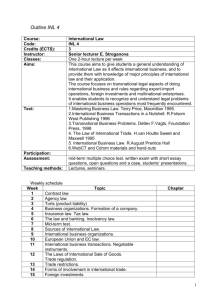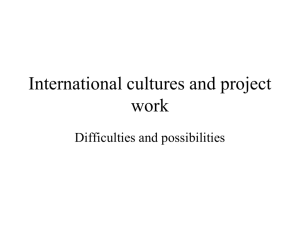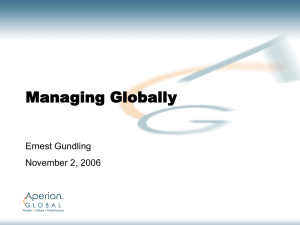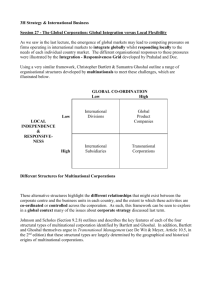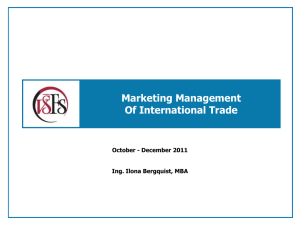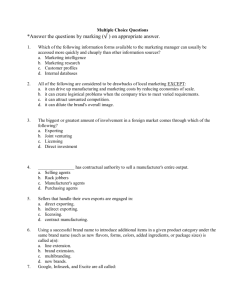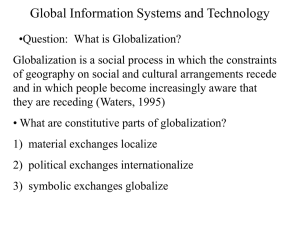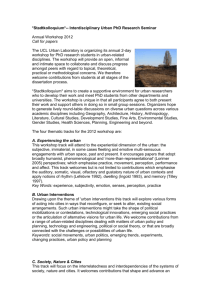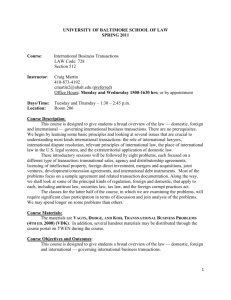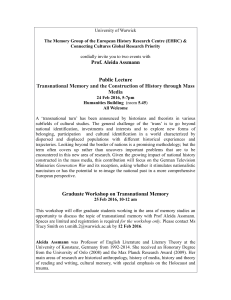Global vs. Multinational Companies: Bartlett & Ghoshal Model
advertisement
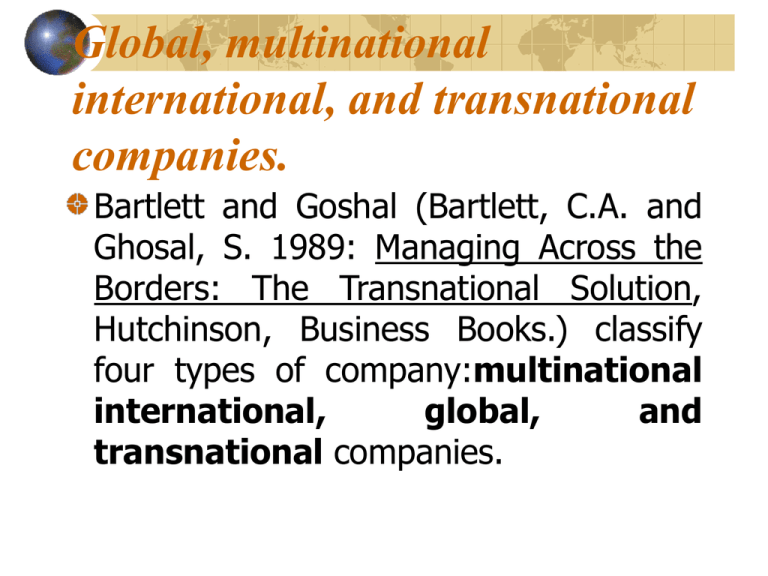
Global, multinational international, and transnational companies. Bartlett and Goshal (Bartlett, C.A. and Ghosal, S. 1989: Managing Across the Borders: The Transnational Solution, Hutchinson, Business Books.) classify four types of company:multinational international, global, and transnational companies. Headquarters of INTERNATIONAL company retains considerable control over the subsidiary’s management systems and marketing policy, but less so than in the global company. Products and technologies are developed for the home market, extended to other countries with similar market characteristics, then diffused elsewhere, and the developmental sequence is decided on the basis of managing the product lifecycle as efficiently and flexibility as possible. The headquarters of the MULTINATIONAL company decides financial policy but otherwise permits subsidiaries considerable autonomy in determining management style and responding to local product needs and markets. Examples include Unilever and Philips. The GLOBAL company, exemplified by such Japanese firms as Kao and NEC, centralizes key functions – including marketing and finance. Headquarters produces the new technology and disseminates it to subsidiaries. Cost advantages are achieved through economies of scale and global-scale operations. The need for efficiency and economies of scale means that products are developed that exploit needs felt across the range of countries. Specific local needs tend to be ignored. The TRANSNATIONAL company evolved in the 1980s in response to environmental forces and simultaneous demands for global efficiency, national responsiveness, and worldwide learning. The transnational model combines features of multinational, global, and international models. A product is designed to be globally competitive, and is differentiated and adapted by local subsidiaries to meet local market demands. Bartlett and Goshal define these four terms precisely. But much of the recent literature is ambiguous.“Global” is sometimes used to describe any strategy planned for more than one country, and the term “transnational” to mean “multinational” (in the preBartlett and Goshal sense). Eom (Emo, S. B. 1994: Transnational Management System: An Emerging Toll for Global Strategic Management. Sam Advanced Management Journal, pp.2227.) entitles his paper “Transnational management systems: an emerging tool for global strategic management.” In order to avoid confusion we will use the terms only in the sense employed by Bartlett and Goshal. Hofstede's research findings are invaluable when applied and modified to your specific situation and needs. They provide a starting point for further analysis and research. First, review the similarities and the differences between your situation and that of Hofstede's research sample (within the same country), and decide how the differences affect your application of the model to the target workforce. In particular, look for (i) sub cultural differences, (ii)industry differences,(iii)differences arising from the organizational culture.
